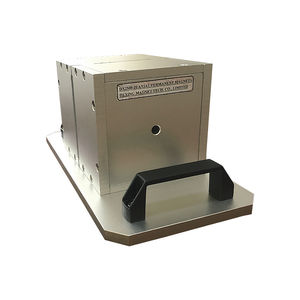
- Products
- Ferrite magnet
- Xiamen Dexing Magnet Tech. Co., Ltd.

- Products
- Catalogs
- News & Trends
- Exhibitions
Halbach array permanent magnet ferritecylindricalradial
Add to favorites
Compare this product
Characteristics
- Material
- ferrite
- Configuration
- cylindrical
- Other characteristics
- Halbach array, radial
Description
A Halbach array is a special arrangement of permanent magnets that augments the magnetic field on one side of the array while cancelling the field to near zero on the other side. This is achieved by having a spatially rotating pattern of magnetisation.
Physicist Klaus Halbach, while at the Lawrence Berkeley National Laboratory during the 1980s, independently invented the Halbach array to focus particle accelerator beams.
The Halbach magnetic cylinder combines the radial and parallel arrangement of the magnet. Suppose the end effect is neglected and the permeability of the surrounding magnetized material is considered infinite. In that case, the permanent magnet structure eventually forms one side field, which is a significant feature of Halbach.
A Halbach cylinder is a magnetized cylinder composed of ferromagnetic material producing (in the idealized case) an intense magnetic field confined entirely within the cylinder, with zero field outside. The cylinders can also be magnetized such that the magnetic field is entirely outside the cylinder, with zero field inside. Several magnetization distributions are shown in the figures
Catalogs
No catalogs are available for this product.
See all of Xiamen Dexing Magnet Tech. Co., Ltd.‘s catalogsOther Xiamen Dexing Magnet Tech. Co., Ltd. products
Constant Magnetic Field Magnet
*Prices are pre-tax. They exclude delivery charges and customs duties and do not include additional charges for installation or activation options. Prices are indicative only and may vary by country, with changes to the cost of raw materials and exchange rates.






